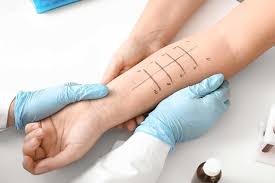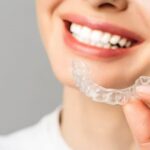Allergy testing helps uncover sensitivities to substances that may impact your daily life. Skin scratch testing is one method medical professionals use to identify common allergens such as pollen, pet dander, food allergens, and latex. Here’s more information about this allergy test and what to expect during the procedure:
Understanding Skin Scratch Testing
Skin scratch testing involves placing small amounts of potential allergens onto your skin, often on the forearm or back, and lightly pricking or scratching the surface. This allows the allergen to enter just below the skin’s surface. The doctor will then observe any reactions, which generally occur within 15 minutes. This procedure provides rapid and reliable insights into what may trigger your allergies.
Identifying Common Allergens Tested
The skin scratch test helps detect a variety of allergies that can affect your health and lifestyle, including:
- Pollen
- Pet Dander
- Mold
- Latex
- Peanuts
- Eggs
Some allergy clinics may also use skin scratch testing as an initial step when checking for allergies to bee stings. The test is quick, minimally invasive, and precise. It pinpoints specific allergens, and this provides you and your doctor with actionable insights for managing your symptoms effectively.
Preparing for Allergy Testing
Proper preparation for allergy testing can significantly contribute to accurate and reliable results. Before your appointment, you may be asked to:
- Discontinue Antihistamines: Stop using antihistamines before your test as directed by your healthcare provider. These medications might suppress allergic reactions, impacting the results.
- Inform Your Allergist: Share all details of any medications you are currently taking with your doctor. Some treatments may interfere with test accuracy, and adjustments might be recommended.
- Avoid Lotions or Creams: Refrain from applying any products to the test area on the day of your appointment. Clean and dry skin can facilitate better test results.
- Choose Loose-Fitting Clothing: Select clothing that allows your allergist easy access to your arms or back to streamline the testing process and avoid unnecessary discomfort.
Knowing What To Expect During the Test
The procedure is simple and takes less than an hour. Your allergist will clean the skin and apply tiny drops of various allergens to it, each in its designated area. A small, sterile tool is then used to scratch or prick the skin mildly, allowing the allergens to come into contact with your immune system.
After approximately 15 minutes, the allergist will check for signs of a reaction, such as redness, swelling, or a raised bump. If a reaction occurs in any area, it indicates sensitivity to that specific allergen.
Understanding What Happens After the Test
Once the test is complete, your allergist will discuss the results, highlighting allergens to which you may be sensitive. This information is valuable for designing a personalized treatment plan that can include avoidance strategies, medications, or immunotherapy.
Sublingual immunotherapy is one treatment option that your doctor may recommend. This method involves placing allergy drops under your tongue regularly to help your immune system build tolerance to specific allergens over time.
Unlike allergy shots, sublingual immunotherapy may be administered at home, making it a convenient choice for many patients. Your allergist will determine if this treatment is appropriate based on your test results and overall health.
Learn More About Allergy Testing
Skin scratch testing is a precise and minimally invasive tool for identifying sensitivities to common allergens. It can help identify sensitivities to various substances, from pet dander to peanuts.
Whether you’re managing seasonal sneezes, planning dietary adjustments, or addressing workplace sensitivities, understanding your allergens provides the foundation for long-term wellness and comfort. Schedule a consultation with a specialist and learn how allergy testing can improve your quality of life.
Related Articles
How Nano Brows Can Transform Your Daily Makeup Routine
How Constipation Affects Your Daily Life and How to Fix It
Combining Cardio and Strength Training for Optimal Fitness Results





